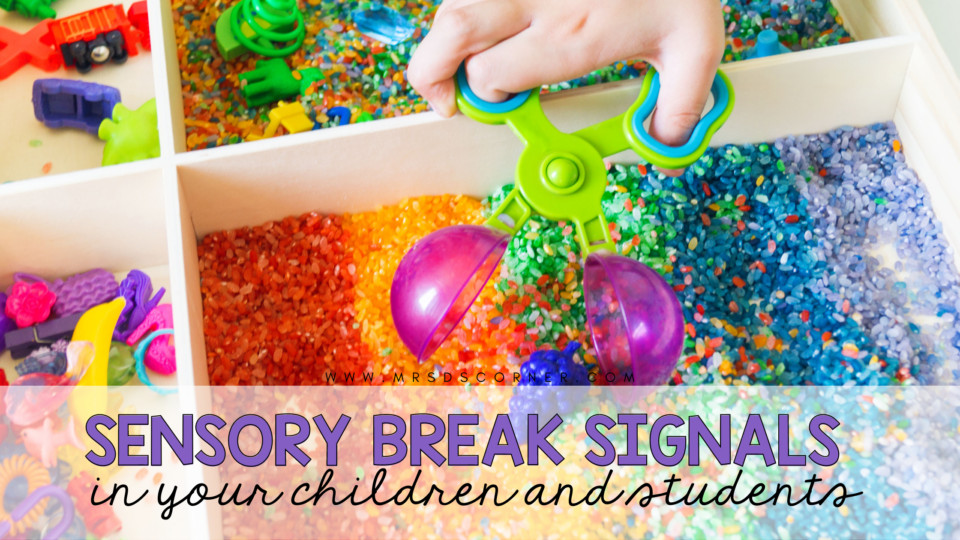As a special education teacher, it’s important to be able to recognize when your students need a sensory break.


Sensory breaks can help children with special needs regulate their emotions and stay focused in the classroom. Unfortunately, it can sometimes be difficult to identify when a child is feeling overwhelmed and needs some time away from the stimulation of the classroom environment.
Fortunately, however, there are certain signals that you can look out for that may indicate that your student would benefit from taking a sensory break.
In this article, we’ll discuss common signs that suggest it’s time for your student to take some time away from their regular activities and find an opportunity to calm down or refocus on tasks. We’ll also provide tips on how best to facilitate this process in order to ensure your students benefit from these types of breaks.
This article contains affiliate links to products that might help you.
What is a Sensory Break?
A sensory break is a short period of time when children can step away from their regular activities in order to refocus and calm down.
During a sensory break, the goal is for the child to engage in activities that are calming or soothing and that help them regulate their emotions.
Examples of such activities can include deep breathing exercises, listening to calming music, doing a puzzle, or working with clay or play dough.


Signs a Child Needs a Sensory Break
Signs that your student may need a sensory break can include physical and verbal cues. It varies from child to child, so it is important to get to know your students and understand what is typical behavior for them and what is not.
Some common signals that indicate that a child needs a sensory break are:
- rocking back and forth
- squinting eyes
- difficulty focusing on tasks
- increase or decrease in voice volume
- covering ears
- covering eyes
- becoming easily frustrated
- restlessness
- being disruptive in the classroom
- fixating on an activity for longer than usual
- getting up out of their chair
- hiding under furniture
- climbing on furniture
- making frequent requests for help.
If students are old enough, it’s a good idea to include them in requesting a sensory break. You can teach them how to advocate for themselves and ask for one verbally or teach them the “break” sign in ASL so that they can communicate with you silently.
Here’s the break (time) sign:
Scheduling in Sensory Breaks
Taking regular sensory breaks in the special education classroom can be hugely beneficial for both teachers and students. Scheduling these ahead of time allows children with special needs to take preventative measures to better manage their emotions, focus in class, and avoid becoming overwhelmed or distracted by the classroom environment.
When they know that they have a sensory break coming up, students may be able to continue working until that time. While this may work for most students, there will always be times when flexibility is needed, and students require sensory breaks before or after the scheduled time.
Scheduling the sensory breaks into the day helps ensure that classes run smoothly, minimizes disruptions, and creates a learning environment where everyone can thrive.
Facilitating a Sensory Break
It’s important to remember that not all sensory breaks need to be done in a designated “sensory room” or area of the classroom. A sensory break can also take place in any quiet place that is conducive to calming activities, such as a corner or even outside in the fresh air.
It’s also important to keep the sensory break brief, as too long of a break can cause children to become disinterested and lose focus.
When it comes to facilitating a sensory break for your students, it’s best to provide them with clear instructions on how they can take some time away from their regular activities in order to refocus and calm down.
Make sure to offer a variety of calming activities that your students can choose from, but allow them to make the final decision on which activity they would like to do. Finally, be sure to provide positive reinforcement when they successfully complete their sensory break and return to their work.
By recognizing the signs that suggest a student needs a sensory break and providing the necessary support, special education teachers can help their students regulate their emotions and remain focused in the classroom. Through sensory breaks, children with special needs can learn to better self-regulate, maintain focus and thrive in a learning environment.

